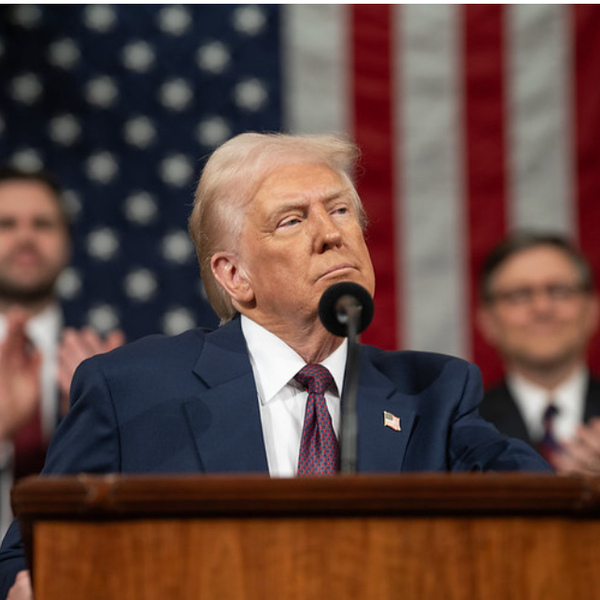
Reprinted with permission from AlterNet.
Another presidential election has run its course and Americans who want to participate in a process that’s democratic, transparent and accountable are left in the dark.
All along the way, there have been dismal failures in our supposed democratic process. That continues today, as election integrity activists point out that the national media’s Election Day exit polls found that Hillary Clinton was ahead in four key states — North Carolina, Pennsylvania, Wisconsin and Florida — but lost the computerized vote count. That’s not the first time a “red shift” occurred between live exit poll results posted on CNN and the later vote count results.
That suggests the exit polls were either deeply flawed, or the vote count was compromised or stolen.
This latest affront comes after other attacks on the process by political insiders and outsiders throughout the race. Before the campaigning began, insiders in 14 Republican-majority states adopted new voting restrictions and barriers such as new ID requirements. In Wisconsin, where Trump was ahead by 27,000 votes, attorneys trying to challenge that state’s new law said upwards of 300,000 residents lacked the required IDs. That early attack was bookended at the election’s close by Republican election officials, from Ohio’s secretary of state to North Carolina county election boards, who gamed the field for brazen partisan advantage. They curtailed early voting, moved precincts, inaccurately purged voter rolls, and made perplexing decisions—as in Ohio—not to activate voting machine audit software, which means the results cannot be verified.
Those assaults were not the only attacks by insiders. Bernie Sanders’ campaign was targeted by top aides to the ultimately disgraced Democratic National Committee chairwoman, Debbie Wasserman Schultz, who worked to undermine his success. But it wasn’t just the DNC. State parties run their nominating caucuses like private golf clubs—they set the rules, which include how votes are weighted, counted (rural areas get more clout, cities get less) and released. Or not, which is what the Iowa party did. It refused to release the raw caucus vote count, allowing Clinton to get headlines that she won a virtual tie. In Nevada’s nominating caucus, the party allowed caucuses on campuses in Reno but not in bigger Las Vegas. That helped her win.
Then there are gerrymandered districts, and arguably the biggest insider-driven insult of all, the Electoral College. That holdover from the 18th century, in which the American system of elections apportioned votes to balance power between the less-populated slave states and the more urban northeast, is notoriously anti-democratic.
Most obviously, Clinton won the popular vote but lost the Electoral College, which creates a system where battleground states count more than the rest of the country. It creates other distortions too, because that’s where campaigns focus and target every voter, with encouraging and discouraging messages, voting rules, etc. That overload contributed to 2016’s flat turnout compared to 2012, despite setting voter registration records.
The tears in the mislabeled democratic process don’t stop there. There were also the actions of outsiders, some overt and some covert. On the overt side were scores of confrontations between self-appointed Republican voting vigilantes and perceived Democratic voters in line, according to civil rights groups like the Advancement Project and Lawyers Committee for Civil Rights Under Law, whose Election Day hotline received 35,000 reports of voting problems. Covertly, there was not just the open question of whether Russia would hack into election computer systems—voter rolls is one system, vote counting machinery another—but some real evidence that it might have happened in North Carolina.
What people heard about were scrambled voter registration database files in Democratic stronghold counties. What they didn’t hear about but what alarmed some computer scientists who track voting machinery, was the vendor that maintains North Carolina’s voter files was in all probability the “unnamed” Florida-based company hacked by the Russians. You can be sure nobody is quarantining those computer systems for immediate examination by computer security experts.
Americans are told to take it on faith that the election results are accurate, from the highest-stakes presidential elections to lower-turnout state races that keep legislatures in one party’s grip. That’s infuriating, patronizing and unnecessary. The alternative is simple: voting needs to be transparent, verifiable and accountable from the start of the process to the end. Instead, it’s just like the dysfunctional campaign finance system. Incumbents have mastered it, despite their gripes about its ugliness, and they are not about to give up their path to power.
Election integrity activists and civil rights lawyers have spent years in all of these silos trying to document and improve their corner of the voting process. Civil rights groups won lawsuits this year blocking the most egregious red-state voter suppression laws. A game-changing efforts to get states to sign onto a national popular vote compact to bypass the Electoral College is making serious headway. It has been adopted in 11 states that have 165 Electoral College votes and it has passed one chamber in 12 more states that have 96 additional votes. And Sanders got the Democratic Party to commit to shrinking its superdelegate system and to revise its caucus rules.
But there are still unanswered questions about what really happened this week with the vote count and it does not appear that key actors there want to air what’s inevitably dirty laundry. It is astounding that the major television and print media organizations that force-fed Americans all their polling data for months, to say nothing of giving Trump hundreds of millions of dollars in free media, will not discuss why their exit polls projecting a Clinton victory were wrong. As election integrity Theodore de Macedo Soares blogged on Friday:
“According to the exit polls conducted by Edison Research, Clinton won four key battleground states (NC, PA, WI, and FL) in the 2016 presidential election that she went on to lose in the computerized vote counts. With these states Clinton wins the Electoral College with a count of 302 versus 205 for Trump. Clinton also won the national exit poll by 3.2% and holds a narrow lead in the national vote count still in progress.
“Exit polls were conducted in 28 states. In 23 states the discrepancies between the exit polls and the vote count favored Trump. In 13 of these states the discrepancies favoring Trump exceeded the margin of error of the state.”
Jonathan Simon, a former pollster who discovered and took screen shots of the 2004 exit poll discrepancy that had Democrat John Kerry ahead in Ohio before George W. Bush was called the winner (the results froze on the Secretary of State’s website for more than an hour), calls this one-way pattern the “red shift.” The bottom line, he said, is that both data sets—the exit polls released in real time on Tuesday, not “adjusted” later on to match the vote count, and reported results from election officials—cannot be reconciled. One has to be wrong, which raises questions about the polling, the machinery’s accuracy or vote count tampering. But without a transparent vote-counting process, people with questions run into a brick wall.
“We call a shift towards Republicans a ‘red shift,’ and a shift toward Democratic candidates a ‘blue shift.’ We are seeing no blue shifts in this election,” Simon wrote Friday. “This is a familiar pattern, indicative of electronic rigging, but in this case even more dramatic than usual.”
“With all that has been said and written about the vulnerability of the computers that count our votes in secret, one must ask why these votes and states shifted?” he continued. “And why the outcome-changing results are simply accepted as accurate and honest. There is every reason to investigate and then recount key states by hand where possible. This is too often not possible, because some of these results come from paperless, touchscreen computers. And even where possible, with optical scanners, it is just not done.”
There’s too much that’s just not done in American elections that could make the process earn the right to be called democratic. Voter registration could be automatic for all eligible citizens. Election Day could be a holiday or all voting could be by mail—as vote by mail states have the highest participation rates. Election districts could be drawn by non-partisan commissions and not gerrymandered by one political party. Campaigns could be publicly financed and the media could be required to reinstitute the “fairness doctrine” to give candidates equal airtime. Parties could open up their nominating process to all voters and Democrats could release caucus vote counts. States could adopt ranked-choice voting to replace the lesser-of-two-evils system. Race- and class-based voter suppression tactics could be retired. The election machinery could be based on using verifiable paper ballots and transparent counting and audit procedures.
“Is it a patriotic service to our country—and the world—to passively and quietly accept the results from this election without review or inquiry?” Simon said. “Let’s take responsibility and investigate where the evidence gathered places the validity of these results in doubt.”
Steven Rosenfeld covers national political issues for AlterNet, including America’s retirement crisis, democracy and voting rights, and campaigns and elections. He is the author of “Count My Vote: A Citizen’s Guide to Voting” (AlterNet Books, 2008).
IMAGE: Ohio voters cast their votes at the polls for early voting in the 2012 U.S. presidential election in Medina, Ohio, United States on October 26, 2012. To match Insight USA-VOTINGRIGHTS/OHIO. REUTERS/Aaron Josefczyk/Files








